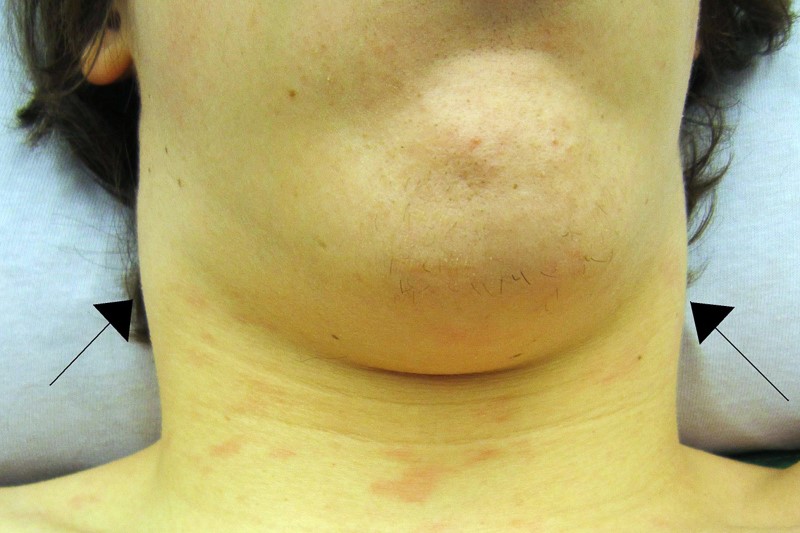
Enlarged lymph nodes: the causes of lymphadenopathy
Let’s talk about lymphadenopathy: while the best known circulation is that of the blood, through arteries and veins, the circulation of the lymph is still an unknown and uninteresting subject for many
On the contrary, the lymphatic system is crucial for the survival of the body, since it is the main site of interaction between antigens and the immune system, i.e. between foreign substances that attack the body and the defence mechanisms that are put in place to counteract this aggression.
Diseases related to enlarged lymph nodes
The entire lymphatic system is a dense network of capillaries that contain within them lymph nodes, collection and sorting ‘stations’ that basically have only one task: to intercept the antigens that reach them via the lymphatic stream and put in place the defences to neutralise them, defences that basically consist of lymphocytes and macrophages, cells specialised in fighting foreign substances and infectious agents.
The increased volume of the lymph nodes (the so-called ‘swollen glands’) can, therefore, be caused
- by the increased production of lymphocytes for the purpose of defence against an infection;
- by the proliferation of macrophages and inflammatory cells as a reaction to a state of inflammation.
In these cases, the typical structure of the lymph nodes is kept intact, which is why the lymph node enlarged due to the aforementioned causes (infection and/or inflammation) is distinguishable from the lymph node enlarged due to tumour causes, which instead cause a disruption of the normal lymph node structure.
Finally, since the lymph node has a great ability to intercept circulating tumour cells, and since it is an excellent medium for cell development, it is easy to understand why it also increases in volume when metastatic cells invade.
What causes lymphadenopathy
The pathological situations that cause an increase in the volume of one or more lymph nodes are really many, some trivial and others very serious, so let’s look at the most important or frequent ones, obviously referring the assessment and diagnosis of the case to the treating physician.
We can distinguish six different types of pathologies that cause lymphadenopathy:
- Infectious diseases: this is a huge field and the classification of lymphadenitis can be made on different bases: acute or chronic, superficial or deep, district or systemic, primary or secondary. If we investigate the possible causes, we find viruses, bacteria, fungi and protozoa. All are capable of increasing the production of lymphocytes and macrophages, resulting in increased lymph node volume.
- Inflammatory diseases: in this case there is an overproduction of lymphocytes only, and the most frequent situations are auto-immune diseases and diseases involving the immune system, such as rheumatoid arthritis, sarcoidosis, lupus, autoimmune anaemia. This group also includes lymphadenites caused by reactions to drugs such as hydantoin and lymphadenites reactive to local inflammatory processes.
- Tumour diseases: acute and chronic leukaemias, lymphomas and histiocytoses are all primary diseases of the lymph nodes, while metastatic involvement is common in breast, lung, prostate, gastrointestinal tract, head and neck cancers, as well as melanomas and other rarer tumours.
- Infiltrative diseases: in Gaucher disease, Niemann-Pick disease and amyloidosis, lymphadenopathies are the rule.
- Endocrine diseases: only hyperthyroidism (Basedow’s disease) causes increased lymph node volume due to lymphoid hyperplasia, whereas in other diseases of the endocrine glandular system lymph node involvement is extremely rare.
- Diseases with an unknown cause: sarcoidosis, Kawasaki syndrome, chronic granulomatous disease, muco-cutaneous syndrome, histiocytic diseases and other decidedly rare conditions complete this list.
Read Also:
Emergency Live Even More…Live: Download The New Free App Of Your Newspaper For IOS And Android
Sentinel Lymph Node Technique: What It Is, What It Is Used For
Lymphadenitis: Symptoms, Diagnosis, Treatment And Prevention Of Lymph Node Infection
Lymphoma: 10 Alarm Bells Not To Be Underestimated
Non-Hodgkin’s Lymphoma: Symptoms, Diagnosis And Treatment Of A Heterogeneous Group Of Tumours
CAR-T: An Innovative Therapy For Lymphomas
Lymphangiomas And Lymphatic Malformations: What They Are, How To Treat Them
Lymphadenomegaly: What To Do In Case Of Enlarged Lymph Nodes
Swollen Lymph Nodes: What To Do?


